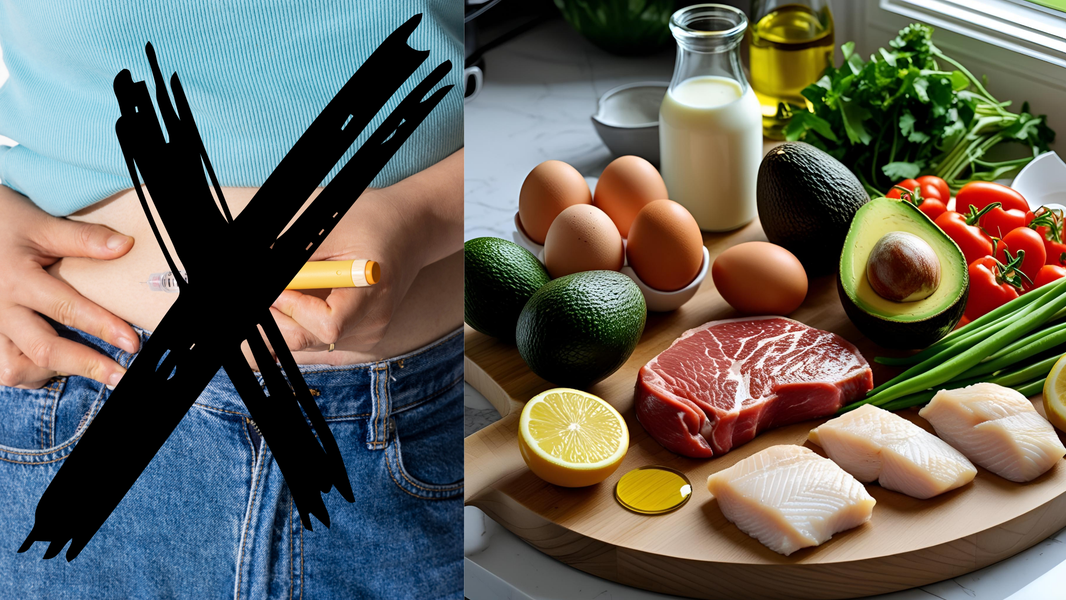Have you ever wondered why your child's favorite cereal glows with colors that would make a neon sign jealous? Or why that bright red cherry in your dessert seems almost too vibrant to be natural? The answer lies in a colorful web of synthetic chemicals that have been quietly painting our food supply for decades, often with concerning implications for our health.
For over a century, food manufacturers have relied on petroleum-based synthetic dyes to make products more visually appealing. These artificial colors, with names like Red No. 3 and Yellow No. 6, have become so commonplace that we rarely question their presence in everything from breakfast cereals to medications. However, mounting scientific evidence and growing public awareness have sparked what many are calling a "rainbow revolution" in food safety.
The years 2025 and 2026 are marking a pivotal turning point in American food regulation. Both federal agencies and state governments are taking unprecedented action to restrict or eliminate synthetic food dyes, responding to decades of research linking these additives to hyperactivity in children, potential cancer risks, and other health concerns. The FDA's commitment to phase out petroleum-based synthetic dyes, coupled with an increasing number of state-level restrictions noted by the Association of State and Territorial Health Officials (ASTHO), signals a fundamental shift in how we approach food safety and consumer protection.
This regulatory transformation reflects a broader awakening to the connection between what we eat and how we feel. As we'll explore, the movement away from synthetic dyes represents more than just regulatory compliance; it's a recognition that the vibrant colors in our food should come from nature's palette, not from petroleum-derived chemicals in a laboratory.

Federal Action: Phasing Out Synthetic Dyes
The Red No. 3 Breakthrough
The most significant federal action came with the FDA's formal ban on Red No. 3 (Erythrosine/E127) in food and ingested drugs, which took effect in January 2025. This petroleum-derived dye, which gives foods their distinctive cherry-red color, had been under scrutiny for decades due to studies showing it caused thyroid tumors in laboratory rats.
The ban represents the activation of the Delaney Clause, a provision in federal food safety law that prohibits the use of any food additive found to cause cancer in humans or animals. What made this particularly noteworthy was that Red No. 3 had already been banned in cosmetics and externally applied drugs in 1990 due to the same safety concerns, creating an illogical situation where the dye was considered too dangerous for lipstick but acceptable in children's candy.
The removal of Red No. 3 affects thousands of products, from maraschino cherries and strawberry milk to children's medications and holiday-themed baked goods. Food manufacturers are working to reformulate products using natural alternatives like anthocyanins from berries or lycopene from tomatoes.
A Broader FDA Initiative
The Red No. 3 ban was just the beginning of a more comprehensive federal initiative. In a groundbreaking announcement, the Department of Health and Human Services (HHS) and FDA revealed plans to phase out all petroleum-based synthetic dyes by the end of 2026. This ambitious timeline represents the most significant overhaul of food coloring regulations in American history.
The phase-out includes the formal revocation process for Citrus Red No. 2 and Orange B, two lesser-known dyes primarily used in orange peels and specific food applications. More importantly, the FDA has begun intensive collaboration with industry stakeholders to develop timelines for removing other widely used synthetic dyes, including Yellow No. 5 (Tartrazine), Yellow No. 6 (Sunset Yellow), Blue No. 1 (Brilliant Blue), and Blue No. 2 (Indigo Carmine).
The Scientific Rationale
The federal shift reflects growing scientific consensus about the potential health risks of synthetic food dyes. Research has suggested connections between these additives and attention deficit hyperactivity disorder (ADHD) symptoms in children, with some studies indicating that eliminating artificial colors from children's nutrition may lead to behavioral improvements in sensitive individuals.
Beyond behavioral concerns, ongoing research continues to examine the genotoxic potential of certain synthetic dyes, meaning their theoretical ability to damage genetic material in cells. While the cancer risk to humans remains a subject of scientific investigation, the precautionary principle that guides modern food safety regulation suggests that removing these unnecessary additives is the prudent path forward.
The FDA's decision also acknowledges that synthetic food dyes serve no nutritional purpose. Unlike preservatives that extend shelf life or emulsifiers that improve texture, artificial colors exist solely for aesthetic appeal. This makes their risk-benefit calculation particularly straightforward: any potential health risk, however small, outweighs the cosmetic benefit they provide.

State-Level Initiatives: A Patchwork of Bans
The State-Led Movement
While federal action provides nationwide consistency, individual states have been leading the charge against synthetic food dyes, often motivated by successful bans in countries like those in the European Union. This state-level activism has created a complex patchwork of regulations that food manufacturers must navigate, but it has also accelerated the broader movement toward cleaner food ingredients.
The emergence of numerous state-level actions reflects growing domestic awareness about food additives and their potential health impacts. Parents, educators, and health advocates have been particularly vocal about the need to remove synthetic dyes from products commonly consumed by children, leading to legislative action across more than 20 states.
California: Leading the Charge
California has emerged as the most aggressive state in targeting food additives. Assembly Bill 418 (AB 418) banned Red No. 3 along with three other controversial additives, with the ban taking effect in 2027. This legislation makes California the first state to ban specific food dyes outright, setting a precedent that other states are likely to follow.
Building on this momentum, Assembly Bill 2316 (AB 2316) specifically targets school nutrition programs, requiring the removal of various synthetic dyes from school food by December 2027. This legislation recognizes that children are particularly vulnerable to the effects of food additives and that schools have a responsibility to provide the healthiest possible nutrition options.
The California legislation is particularly significant because of the state's enormous market influence. When California bans an ingredient, food manufacturers often reformulate products nationally rather than maintaining separate product lines for different states. This "California effect" means that the state's food safety standards often become de facto national standards.
West Virginia: Comprehensive School Protection
House Bill 2354 (HB 2354) in West Virginia takes a two-pronged approach to synthetic dye regulation. The first phase, effective August 2025, bans specific dyes in school nutrition programs, ensuring that children aren't exposed to these additives during their school meals and snacks.
The second phase, beginning in January 2028, implements a broader ban on the sale of foods containing certain dyes and additives throughout the state. This comprehensive approach recognizes that protecting children requires action beyond school settings, addressing the synthetic dyes present in grocery stores, restaurants, and other food service establishments.
West Virginia's legislation is particularly notable for its recognition that synthetic food dyes are often concentrated in products marketed to children. By prioritizing school settings first, the state acknowledges the special vulnerability of developing minds and bodies to chemical additives.
Utah: School-Focused Regulation
House Bill 402 (HB 402) in Utah, effective May 2025, prohibits the sale or service of foods containing certain synthetic dyes in school settings. However, the legislation includes exceptions for special events, fundraising activities, and foods brought from home, reflecting a practical approach to implementation while still protecting children during their regular school nutrition.
Utah's approach demonstrates how states are balancing health protection with practical considerations. By focusing on regular school meals while allowing exceptions for special circumstances, the legislation avoids creating undue hardship while still achieving its primary goal of reducing children's daily exposure to synthetic dyes.
The Broader State Movement
Beyond these specific examples, legislative activity related to food dye restrictions is occurring across more than 20 states. Some states are focusing on labeling requirements, mandating that products containing synthetic dyes carry clear warnings about potential health effects. Others are considering broader bans similar to California's approach.
This widespread legislative activity reflects a fundamental shift in how Americans think about food safety. Rather than waiting for federal action, states are taking initiative to protect their residents, particularly children, from potentially harmful food additives. This grassroots approach to food safety regulation represents a return to local control over public health issues.

Industry Response and Consumer Implications
Challenges for Food Manufacturers
The patchwork of federal and state regulations has created significant challenges for food manufacturers. Companies must now navigate varying requirements across different jurisdictions while managing the technical challenges of reformulating products that have relied on synthetic dyes for decades.
Reformulation costs can be substantial, particularly for companies with extensive product lines containing synthetic dyes. Natural color alternatives often behave differently during processing, storage, and shipping, requiring extensive testing to ensure product quality and shelf stability. Additionally, natural colors may be more expensive than synthetic alternatives, potentially affecting product pricing.
The regulatory timeline has also created urgency around reformulation efforts. Companies that delay switching to natural alternatives risk finding themselves unable to sell existing products in certain markets, leading to potential waste and financial losses.
The Shift Toward Natural Alternatives
Despite the challenges, many manufacturers are embracing the transition to natural color sources. Plant-based ingredients are increasingly replacing synthetic dyes across product categories. Beet juice provides vibrant reds and pinks, turmeric offers golden yellows, spirulina creates blues and greens, and anthocyanins from berries deliver purples and deep reds.
These natural alternatives often provide additional nutritional benefits beyond their coloring properties. For example, turmeric contains curcumin, a compound with anti-inflammatory properties, while anthocyanins from berries provide antioxidant benefits. This means that the shift away from synthetic dyes can actually improve the nutritional profile of foods.
Innovation in natural color technology has accelerated rapidly in response to regulatory pressure. Food technology companies are developing new extraction methods and stabilization techniques that make natural colors more viable for large-scale food production. This innovation is helping to close the gap between synthetic and natural color performance while reducing costs.
Consumer Choices and Label Reading
For consumers, the regulatory changes create both opportunities and responsibilities. The most immediate implication is the importance of reading food labels carefully. Synthetic dyes may be listed under various names, including "FD&C Red No. 3," "E127," or simply "artificial color."
Consumers interested in avoiding synthetic dyes should look for products labeled with natural color sources like "colored with beet juice," "turmeric extract," or "fruit and vegetable extracts." These products are becoming increasingly available as manufacturers respond to both regulatory requirements and consumer demand.
The transition period also means that consumers may notice changes in the appearance of familiar products. Natural colors can be less vibrant than synthetic alternatives and may fade or change over time. Understanding these differences can help consumers adjust their expectations while supporting the move toward cleaner ingredients.

Titanium Dioxide (E171): A Look Across the Pond
The European Union's Proactive Stance
While American attention has focused primarily on synthetic dyes, it's worth examining the regulatory approach to titanium dioxide (E171), a white pigment widely used in foods, medications, and personal care products. The European Union banned titanium dioxide as a food additive in 2022, following a comprehensive safety assessment by the European Food Safety Authority (EFSA).
The EFSA's decision was based on concerns about genotoxicity, the potential for titanium dioxide nanoparticles to damage genetic material in cells. The assessment concluded that titanium dioxide could not be considered safe as a food additive because genotoxicity concerns could not be ruled out, and there was insufficient data to establish a safe level of exposure.
This ban affects thousands of products across Europe, from chewing gum and candies to pharmaceutical tablets and nutritional supplements. The EU's action demonstrates a precautionary approach to food safety, removing additives when scientific uncertainty exists about their safety.
FDA's Different Approach
The FDA's position on titanium dioxide differs significantly from the EU's stance. Currently, titanium dioxide remains approved for use in foods, drugs, and cosmetics in the United States, with the agency maintaining that available data supports its safety when used as approved.
This difference in regulatory approach highlights the varying philosophies between American and European food safety agencies. While the EU tends to apply the precautionary principle more readily, removing additives when safety questions arise, the FDA typically requires more definitive evidence of harm before taking regulatory action.
However, growing calls for action on titanium dioxide in the United States suggest that this regulatory difference may not persist indefinitely. Consumer advocacy groups, health professionals, and some legislators are pressing for a review of titanium dioxide's safety status, particularly given its widespread use in products consumed by children.
Future Outlook and Implications
The titanium dioxide situation illustrates how international regulatory differences can influence global food safety standards. Many multinational food companies have already begun reformulating products to meet EU requirements, and some are extending these reformulations to their American product lines to maintain consistency across markets.
For American consumers, monitoring developments related to titanium dioxide is important, particularly given its presence in many everyday products. While the current FDA position supports its continued use, the evolving scientific understanding of nanoparticle safety and growing consumer awareness may influence future regulatory decisions.
The titanium dioxide example also demonstrates the broader trend toward increased scrutiny of food additives that serve primarily cosmetic functions. Like synthetic dyes, titanium dioxide exists in foods primarily for appearance rather than safety, nutrition, or function, making its risk-benefit calculation increasingly questionable as scientific understanding evolves.

Conclusion
The regulatory transformation occurring in 2025 and 2026 represents a watershed moment in American food safety policy. The federal commitment to phasing out petroleum-based synthetic dyes, combined with aggressive state-level actions across the country, signals a fundamental shift toward prioritizing public health over cosmetic food enhancement.
This movement reflects growing recognition that the vibrant colors in our foods should come from nature's bounty rather than petroleum-derived chemicals. The scientific evidence linking synthetic dyes to behavioral problems in children, combined with emerging concerns about their broader health effects, has finally reached a tipping point that regulatory agencies can no longer ignore.
The patchwork of federal and state regulations, while creating implementation challenges for manufacturers, demonstrates the power of democratic action on public health issues. When federal agencies move slowly, states can lead the way, creating market pressures that accelerate broader change. This multi-level approach to food safety regulation may become a model for addressing other controversial food additives in the future.
As consumers, we have the opportunity to support this transformation through our purchasing decisions. By choosing products colored with natural ingredients and advocating for continued progress toward safer food additives, we can help ensure that this rainbow revolution leads to lasting improvements in food safety.
The story of synthetic food dye regulation is far from over. As we continue to learn more about the connections between food additives and health, and as natural color technology continues to improve, we can expect further evolution in how we approach food coloring. The actions of 2025 and 2026 represent not an end point, but rather the beginning of a new chapter in American food safety that prioritizes health over appearance and nature over chemistry.
The ongoing evolution of food regulations reminds us that public health protection is a continuous process, requiring vigilance, advocacy, and a willingness to change course when science points toward better approaches. The rainbow revolution in food coloring represents exactly this kind of positive evolution, promising a future where the colors in our food enhance rather than compromise our health.
IMPORTANT NOTE: The specific regulatory changes, dates, and legislative details mentioned in this article represent the outlined scenario provided and should be verified with current FDA and state legislative sources, as food safety regulations continue to evolve rapidly.
References
Research Trends and General Information
Studies suggest connections between synthetic food dyes and behavioral changes in sensitive children, particularly those with ADHD. Research indicates that artificial colors serve no nutritional purpose and exist solely for aesthetic appeal.
The European Food Safety Authority concluded in 2021 that titanium dioxide could not be considered safe as a food additive due to genotoxicity concerns, leading to its ban in EU foods by 2022.
Research trends indicate growing consumer preference for natural color sources and increasing awareness of potential health implications of synthetic additives.
Regulatory Information Sources
For current and accurate information about food dye regulations, consumers should consult:
- U.S. Food and Drug Administration (FDA.gov)
- Association of State and Territorial Health Officials (ASTHO.org)
- Individual state legislative websites for specific state regulations
- European Food Safety Authority (EFSA.europa.eu) for international perspectives
Verification Note: Specific legislative details, dates, and regulatory timelines mentioned in this article should be confirmed with official government sources, as food safety regulations are subject to change and this content represents general trends and outlined scenarios rather than verified current law.
The information provided here is for general knowledge and educational purposes only. It should never replace personalized medical guidance from your physician or another qualified healthcare provider. We do not offer medical advice.






